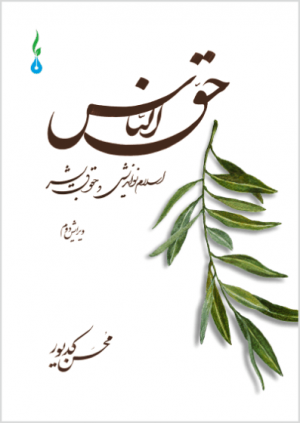| Title | The Life of Prophet Mohammad and the Image of Islam |
|---|---|
| The Collection of Iran and Islam during the 1st century AH (Vol. I) | |
| Author | Hasan Yousefi Eshkevari |
| Editor | Masoumeh Shapouri |
| Edition | 1st |
| Pages | 560 |
| Format | 17 x 24 cm |
| Language | Persian (Farsi) |
| Year of publication | 2022 |
| ISBN | 978-3-948894-17-7 |
| Publisher | New Thought PRESS |
Short Abstract:
This collection of scholarly material on the 1st century AH has been comprised of four books presented in six volumes under the following titles:
– Book One: The Life of Prophet Mohammad and the Image of Islam(Volume I)
– Book Two: The Arab-Islamic Caliphate, in two parts:
Part I: From Saqifah to the End of the Ottoman Era (Volume II)
Part II: From Imam Ali‘s Caliphate to Imam Hassan (VolumeIII)
– Book Three: The Umayyads, in two parts:
Part I: The Descendants of Abu Sufyan (Mu‘awiyah and Yazid ibn Muawiyah) (Volume IV)
Part II: The Marwanis (from Marwan Ibn Hakam to the demise of the Caliphate of Umar ibn Abdul Aziz in 102 AH) (Volume V)
– Book Four: The Upheavals of Iran under Muslim Arab Occupation in theFirst Century AH (Volume VI)
This Collection was originally meant to represent a history of Iran, addressing Islam and the developments of Muslim Arabs only on its periphery. But in practice, the exact opposite came about!
Although it remains true that the developments and changes first-century Iran underwent are important and constitute the central motif for the author – as far as a general history of Iran and Islam in the first century is concerned – the history of Islam practically stepped into the spotlight of the text while the process of Iran’s eclipse within a newly established Arab-Islamic empire (like other conquered lands) faded from the spotlight. For this reason, the account of the first century is fundamentally and generally devoted to the various developments of Muslim Arabs. Major transformations are evident in both the territory of historical Iran during the first century (from Mesopotamia and southern Iran to Isfahan and Rey in central Iran and to Balkh, Bukhara, Samarkand and Kabul in the foothills of Greater Khorasan and Transoxiana), as well as in the history of the Islamic era (especially by the accounts of Iranian historians such as Ibn Jarir Tabari). The author has attempted his portrayal of these transformations to be as vivid as possible.


 فارسی
فارسی Deutsch
Deutsch









